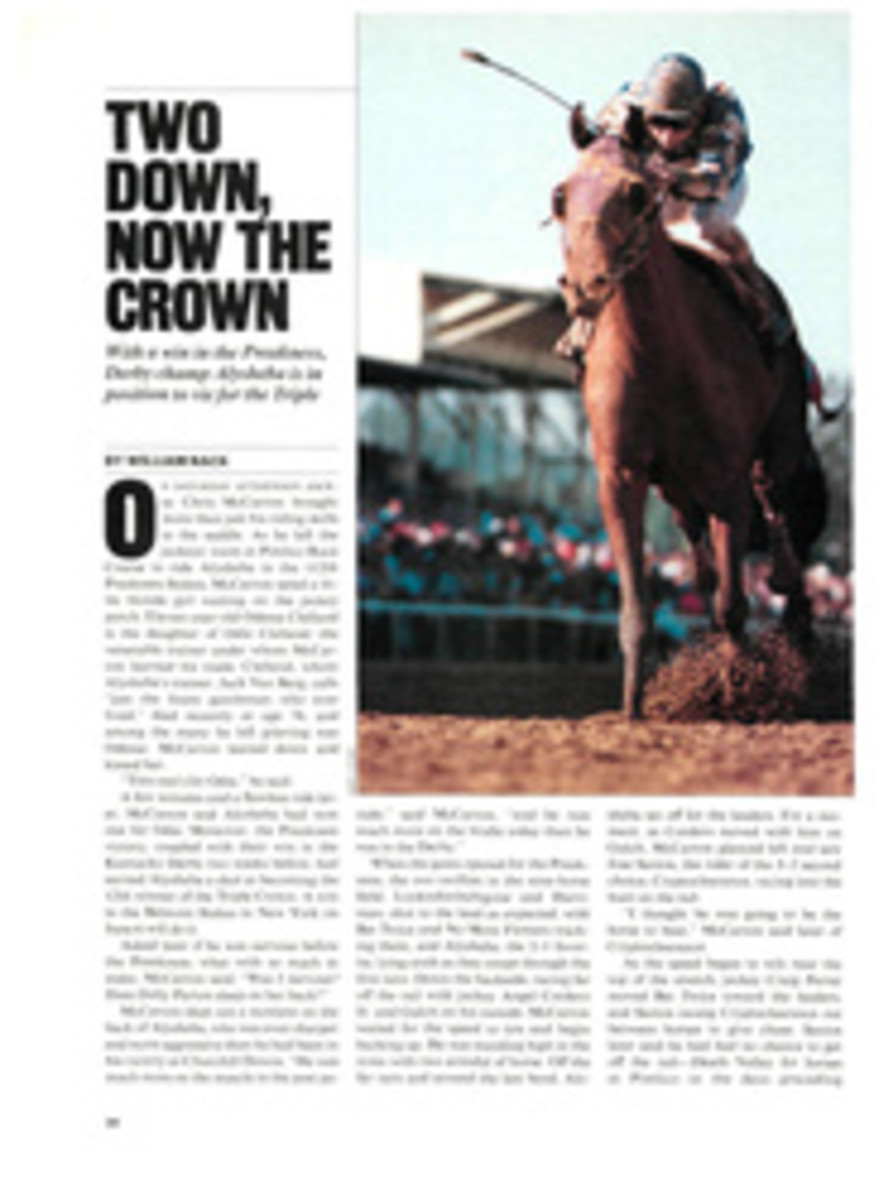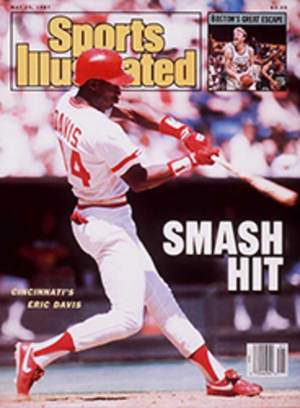
SITTING ATOP A TORNADO
Earlier, Freckles Brown had been out hauling hay in the sultry heat of a July day. But now the 63-year-old retired rodeo cowboy relaxed in the dim coolness of the ranch house on his 540-acre spread near Soper, Okla. He was asked about the Ride.
The words came out softly: "That bull understood what was happening," said Brown, placing his hand flat on the surface of an end table. "After I got on him, and just before the chute opened, his hide went as hard as this tabletop. He knew what he was supposed to do."
It was the 1967 National Finals Rodeo in Oklahoma City, and the bull, named Tornado, was set to do what it had done more than 200 times out of the chute: throw the rider.
Instead, a legend was born. On that cold December night, Brown rode Tornado for the required eight seconds, and it was arguably the greatest performance in the history of the sport.
That a cowboy, any cowboy, could last eight seconds on Tornado was accomplishment enough. It had never happened in the bull's six-year rodeo career. But Brown, a month shy of his 47th birthday, was the oldest active cowboy on the circuit. He had ridden his first bull 30 years before, and many of the men he was competing against in Oklahoma City were young enough to be his sons.
Tornado was the ultimate challenge on the bull-riding circuit. Some cowboys would just scratch when they drew the 11-year-old Brahma-Hereford. It wasn't that Tornado was particularly ill-tempered. Brown would tell you the bull didn't try to go after cowboys once they were thrown. It was simply that many believed Tornado couldn't be ridden at all.
"Tornado had such a reputation that most cowboys were thrown before they even got on him," says former state senator and Oklahoma Congressman Clem McSpadden, who managed the National Finals that year. "But the bull was at a point in its career where it was fit to be ridden. Freckles got on him, bore down and ended up riding him pretty easy."
Brown had always been regarded as a rodeo cowboy's cowboy. He realized it was impossible to defeat a bull physically, so he rode with intelligence. He was a boxer, so to speak, instead of a brawler. He functioned like a human gyroscope on the back of a Brahma. If he thought a bull might veer off hard to the left, Freckles leaned to the right to compensate. His brains-over-brawn style greatly influenced the art of bull riding.
Don Gay, eight-time world bull-riding champion, recalls being a teenager on the rodeo circuit with Brown. "He kept me from whinin' about being tired," says Gay. "He was older than any of us, and he was still up there winnin' the money. He was a good feller."
Injuries beset Brown throughout his career—broken ribs, collarbones and at least eight broken legs. "It seems like I'd just get to riding good and placing good, then—wham!—I'd break my leg," he said. Still, Brown persevered. In 1962 he won the world championship of bull riding, his only world title, but late that year he broke his neck and was briefly paralyzed on his right side.
It was in 1984 that I drove to Brown's ranch for an interview. As he told me about the injuries he had suffered over the years, I noticed he couldn't sit for long in one position. I assumed it was arthritis from all those injuries. It turned out to be prostate cancer.
After Freckles died last March 20, the obituaries called him a legend. He was a legend, and he got there by hard work, determination, and resiliency. He never made a lot of money, but he kept on being the best he could be, and toward the end of his rodeo career, he achieved something remarkable: He rode an unridable bull named Tornado.
"I stood out there in the middle of the arena with my hat off for the longest time," Brown told me. "But the applause didn't die down. It just kept going on and on. And it wasn't just the fans. Even the cowboys were clapping and yelling. I finally walked off, but it didn't let up any. Finally, I looked up at Clem McSpadden and he motioned for me to go back out. So I did. And it started all over again."
In 1984 there was talk about a movie on Freckles's life, with Willie Nelson playing the lead. Nothing seems to have come of it, but I did get Brown to talk about his hopes for a realistic rodeo film.
"I don't know of a movie that got it all right," he said. "There have been a lot of things in some of 'em that misrepresented rodeo. There needs to be a movie that shows how it is. They tell me the movie is gonna have some pretty good wrecks, but also some good ridin'."
Good riding. That was the important thing.
PHOTO
LES OHLAHAUSER
By staying on Tornado, Brown became a rodeo legend.
W.K. Stratton is a reporter for the Ponca City (Okla.) News.

